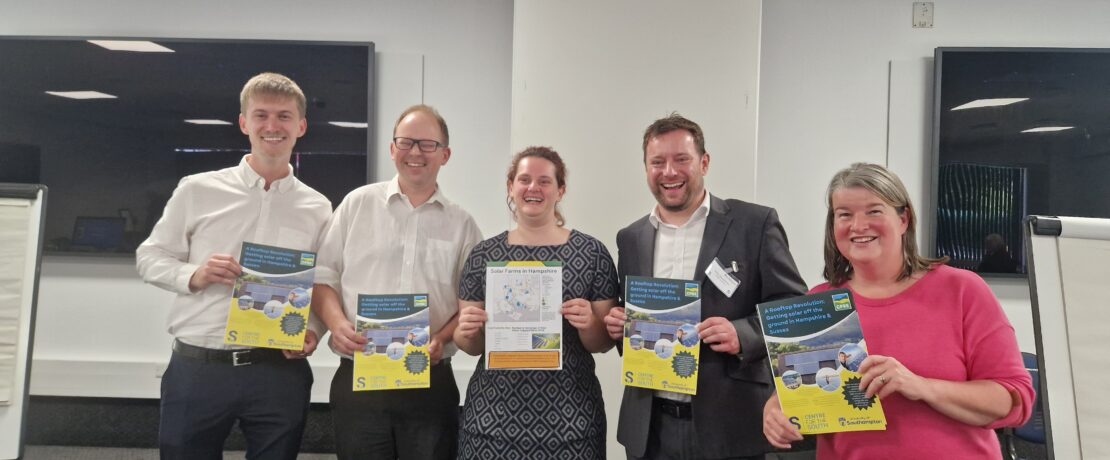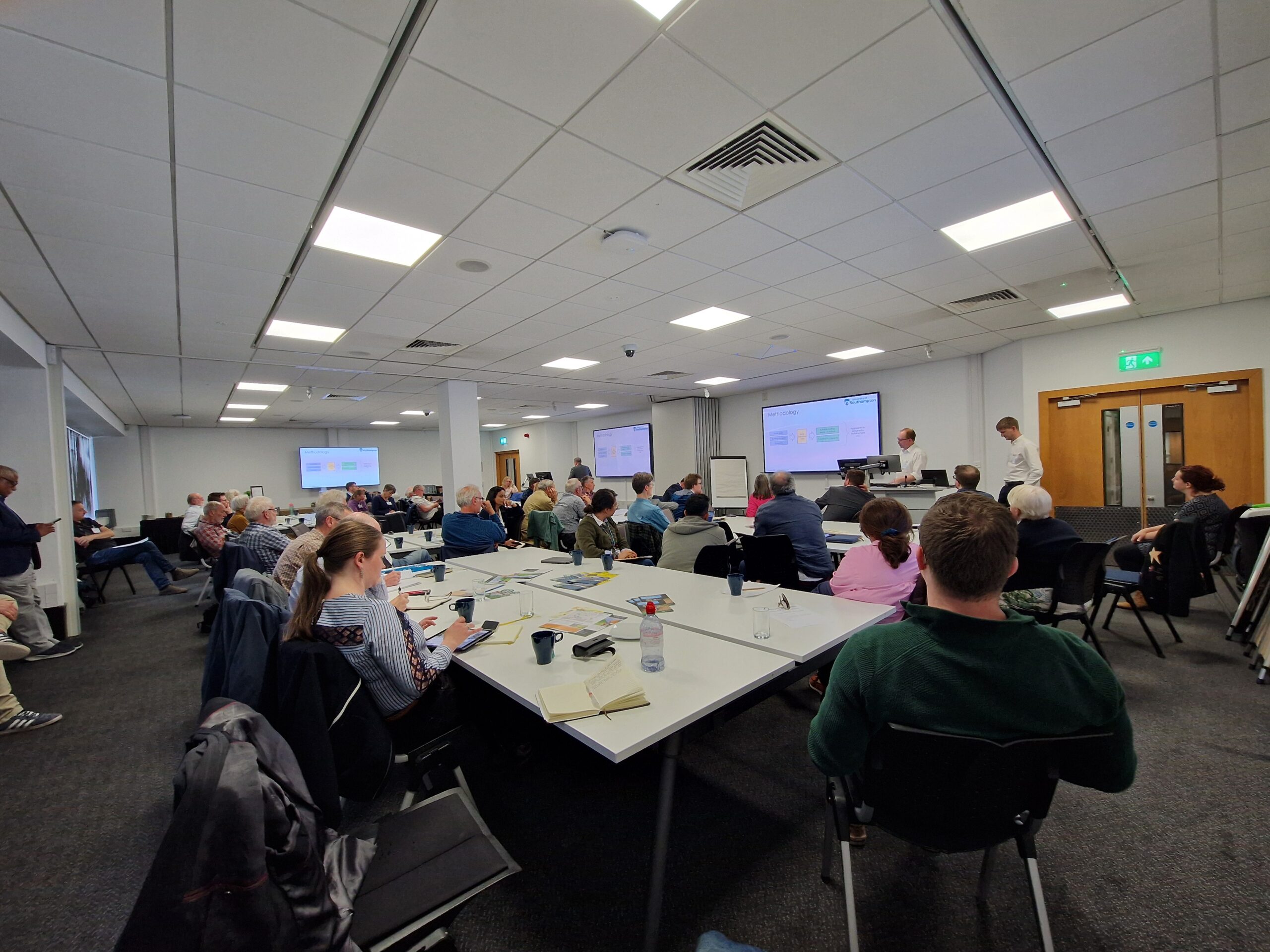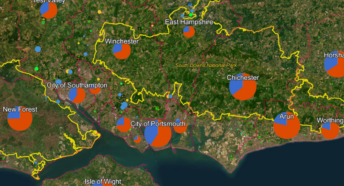A Rooftop Revolution: Getting solar off the ground in Hampshire and Sussex
The Rooftop Solar Conference 2024 arrived in Hampshire (14th June), bringing together charity leaders, professionals, and academic leaders dedicated to reimagining solar energy to enhance the protection of the countryside.
The 2024 inaugural conference, organised by The Centre for the South, explored the vital role rooftop solar energy plays in achieving net zero, tackling the climate crisis and protecting the landscapes and green spaces of Hampshire.
Key points
- Government targets must be re-evaluated in order to maximise land resources and protect the countryside
- We must consider all potential opportunities for rooftop solar, including projects of different sizes and the role of community energy initiatives, to be successful
- A rooftop solar map, created by The University of Southampton, Energy & Climate Team could help guide investment and decision-making in Hampshire
Solar success: planning policy and solar schemes need to adapt
In his opening address at the Rooftop Solar Conference 2024, Alan Whitehead, former MP for Southampton Test and former Shadow Minister (Climate Change and Net Zero), highlighted the importance of adapting planning policies and achieving a rooftop revolution in an equitable and balanced way. He emphasised the significance of the upcoming General Election in setting solar energy targets and planning policies, stating that solar energy will play a crucial role in achieving a low-carbon, wholly renewable energy system. Whitehead stressed the need for significant re-imagination to fully realise the potential of rooftop solar energy, with medium-sized solar projects holding immense potential in reaching net zero targets.
Setting solar targets: we must be ambitious and learn from others
Roger Mortlock, CEO of CPRE National, highlighted the challenges of competing land uses for finite green spaces, noting that we are demanding more from land than ever before.
Mortlock advocated for a rooftop revolution stressing the importance of maximising solar energy on rooftops to successfully reach national energy targets. The government aims to achieve 70GW of solar power by 2035. He went on to speak about the challenges and opportunities available on brownfield sites, new buildings and existing sites such as large car parks and warehouse rooftops, stating that 60% of solar energy could be allocated to rooftops and 40% to ground-mounted installations. This distribution would better align with other government goals, such as restoring 30% of nature by 2030 as countryside spaces can be safeguarded for farming and wildlife.
He also spoke about research from CPRE which acknowledges the need for ground-mounted solar projects to hit national decarbonisation, but emphasised the need to ensure such installations were in the right locations for landscape and natural capital.
Finally, Mortlock highlighted successes in other countries, such as financial incentives in Germany, Zero-Yen solar purchasing power in China and mandatory rooftop solar in France.
Net Zero: mapping Hampshire’s potential
Dr Luke Blunden, Research Fellow in the University of Southampton’s Energy Climate Change Division and Ellis Riddett, Senior Research Assistant in energy and sustainability presented their latest research. In partnership with CPREs Hampshire & Sussex the projects aims to:
- Provide community groups with information on the potential for rooftop solar PV installations in the local area
- Compare the potential rooftop generating capacity with ground-mounted solar farm capacity (existing and planned) in the local area
The research presented at this conference aims to bridge the gap between small-scale household solar and large-scale utility solar farms, by exploring medium-scale rooftop solar opportunities. To reach 2030 targets, we need to maximise urban rooftop space instead of using green spaces for ground-level solar and minimising land capacity. Therefore it is necessary to exploit the opportunities available on industrial parks, car parks and commercial rooftops so that we can simultaneously protect our countryside and keep our land for farming and nature. Studies show that 40-50GW of solar energy could be generated through medium-scale urban rooftop solar by 2030 and over 100GW by 2050.
Research by the University College London (UCL) Energy Institute, comissioned by CPRE, shows the true potential of rooftop solar in helping to meet net zero targets, protect the countryside and tackle the climate emergency. Read the ‘Shout from the rooftops’ report from CPRE.
By creating a solar mapping tool, researchers hope that members of the public will be able to identify the rooftop capacity of individual buildings as well as being a valuable tool to guide investment and decision-making across Hampshire’s parishes, towns, and districts. View the solar mapping tool created by The University of Southampton Energy and Climate Team.
Communities: combatting climate change together
Ollie Pendered, Chief Executive of Community Energy South and lead on Partnership and capacity building support Community Energy Groups, reflected on the importance of community energy initiatives – projects that are wholly or partly owned by the community.
He emphasised that neighbourhood planning will be crucial in a solar rooftop revolution, making decarbonisation plans within communities accessible. Mr Pendered then shared useful insights into what makes a good community solar site including: a large strong roof or flat surface that is southerly facing, substantial year-round energy demand, occupants who own the building or hold a long lease agreement, a willingness to engage with a community partners and good connections to the national grid.
In summing up the day, CPRE Hampshire’s CEO Alison Talbot spoke about the event’s success, stating that it was a ‘huge step forward’ in addressing the need for a rooftop revolution in Hampshire. She emphasised that while there is still progress to be made, the conference provided an overwhelmingly positive platform for people to come together and explore Hampshire’s rooftop solar potential. Alison highlighted the shared passion amongst over 50 delegates to safeguard the countryside and tackle the climate crisis, making the conference an interesting and enjoyable experience with ‘knowledgeable speakers’ and ‘excellent presentations’.
Key facts and figures
- Hampshire County Council declared a climate emergency in 2019
- The current government solar energy target is to reach 70GW by 2035
- Currently 15.8GW of solar power is generated nationally, with just 2GW of this generated through commercial solar rooftop installations
- 40-50GW of solar energy could be generated by medium-scale urban rooftop solar by 2030 and over 100GW by 2050, research suggests











